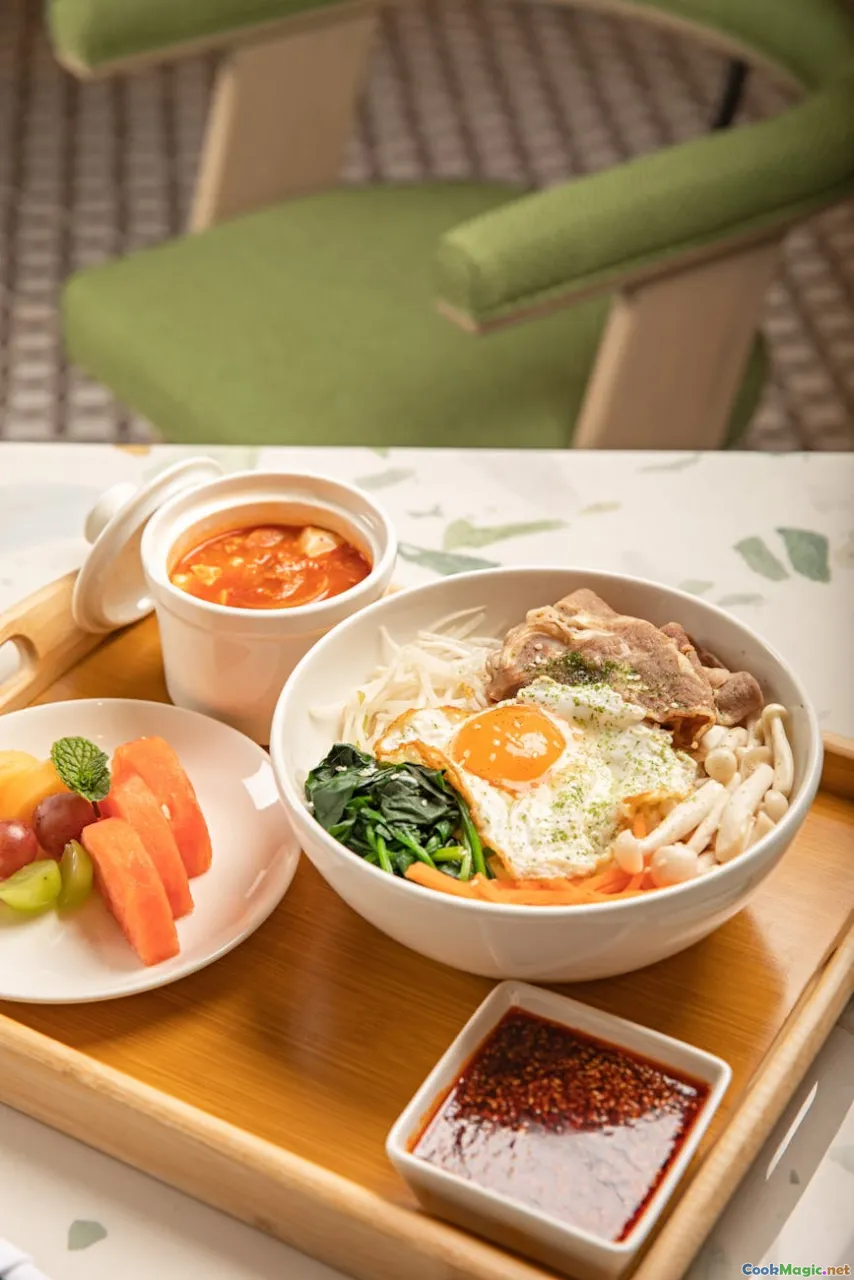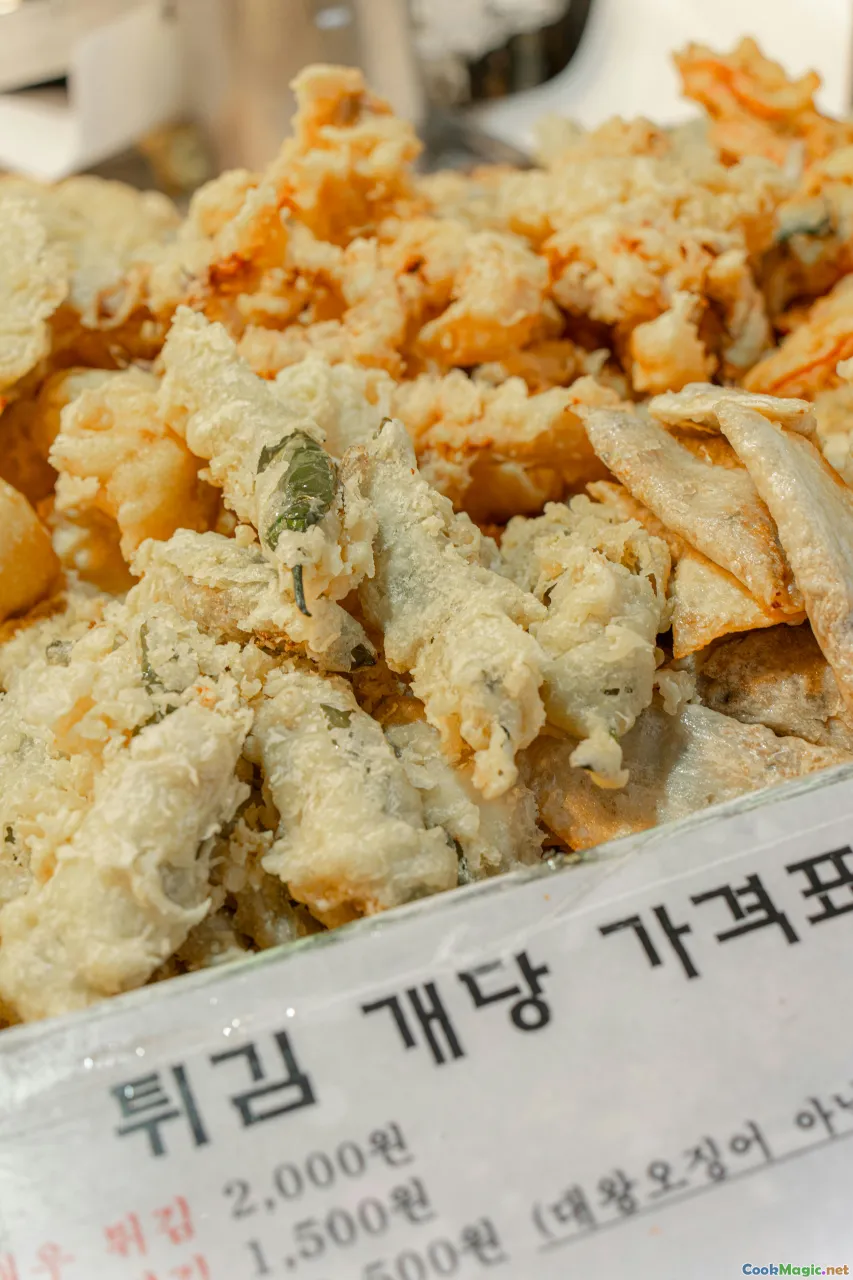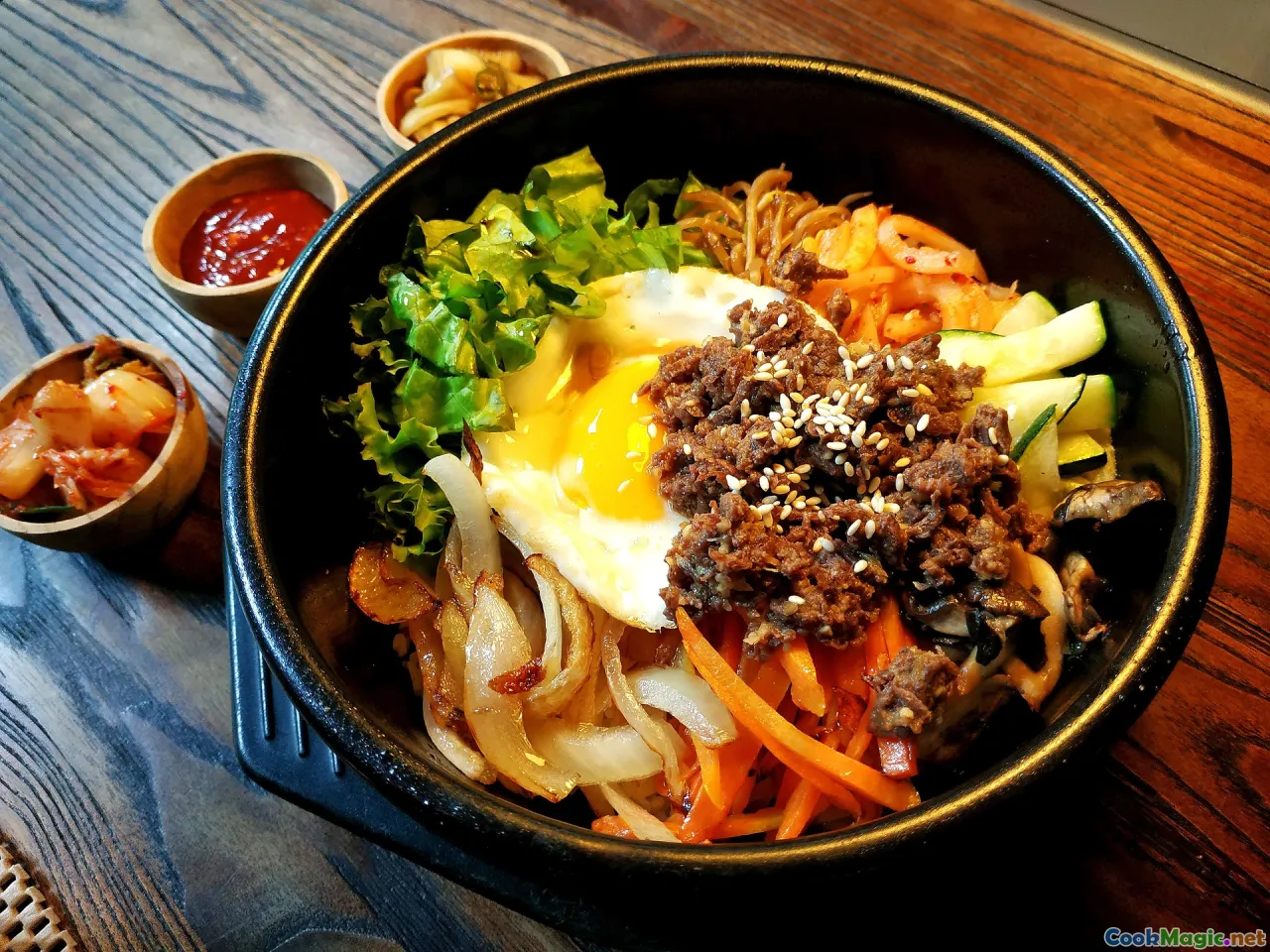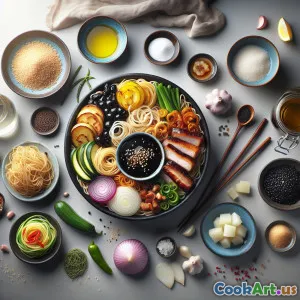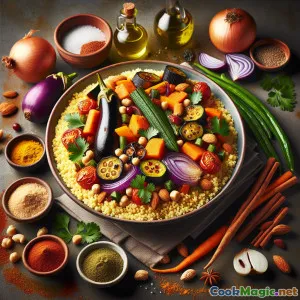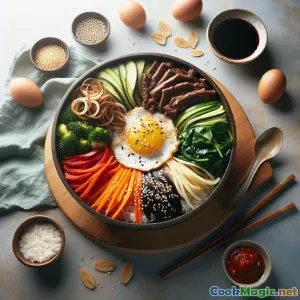
Pyszny Koreański Bibimbap: Kolorowa Miska Ryżu
(Delicious Korean Bibimbap: A Colorful Rice Bowl)
(0 Recenzje)0
487
czerwiec 29, 2025
Zgłoś problem
Składniki
-
2 cups Gotowany Ryż
(Użyj krótkiego ziarnistego ryżu dla autentyczności)
-
150 grams Wołowina
(Cienko pokrojone, można użyć mięsa bulgogi)
-
1 medium Marchewka
(Julienne)
-
1 medium Cukinia
(Julienne)
-
1 cup Szpinak
(Blanszowany)
-
2 large Jajko
(Jajko sadzone na słonecznym side)
-
2 tbsp Gochujang
(Koreańska pasta z czerwonej chili)
-
1 tbsp Olej sezamowy
(Dla smaku)
-
1 tbsp Sos sojowy
(Do marynowania wołowiny)
-
1 tbsp Nasiona sezamu
(Do dekoracji)
(Użyj krótkiego ziarnistego ryżu dla autentyczności)
(Cienko pokrojone, można użyć mięsa bulgogi)
(Julienne)
(Julienne)
(Blanszowany)
(Jajko sadzone na słonecznym side)
(Koreańska pasta z czerwonej chili)
(Dla smaku)
(Do marynowania wołowiny)
(Do dekoracji)
Wartości odżywcze
- Porcje: 2
- Wielkość porcji: 1 miska (350g)
- Calories: 700 kcal
- Carbohydrates: 80 g
- Protein: 30 g
- Fat: 25 g
- Fiber: 6 g
- Sugar: 5 g
- Sodium: 600 mg
- Cholesterol: 200 mg
- Calcium: 150 mg
- Iron: 3 mg
Instrukcje
-
1 - Przygotuj składniki:
Umyj i pokrój marchewkę i cukinię w julienne. Blanszuj szpinak we wrzącej wodzie.
-
2 - Gotować Wołowinę:
Marynuj wołowinę w sosie sojowym i oleju sezamowym na 10 minut, a następnie smaż aż będzie gotowe.
-
3 - Smażyć warzywa:
Na patelni podsmażaj marchewki i cukinię osobno, aż będą miękkie.
-
4 - Usmaż Jajka:
Na osobnej patelni usmaż jajka sadzone na słoneczną stronę góry.
-
5 - Złożenie Bibimbap:
W każej misce umieść porcję ryżu, na wierzchu wołowinę, warzywa i sadzone jajko. Skrop gochujangiem i olejem sezamowym.
-
6 - Serwować:
Posyp sezamem i podawaj ciepłe, mieszając wszystkie składniki przed jedzeniem.
Umyj i pokrój marchewkę i cukinię w julienne. Blanszuj szpinak we wrzącej wodzie.
Marynuj wołowinę w sosie sojowym i oleju sezamowym na 10 minut, a następnie smaż aż będzie gotowe.
Na patelni podsmażaj marchewki i cukinię osobno, aż będą miękkie.
Na osobnej patelni usmaż jajka sadzone na słoneczną stronę góry.
W każej misce umieść porcję ryżu, na wierzchu wołowinę, warzywa i sadzone jajko. Skrop gochujangiem i olejem sezamowym.
Posyp sezamem i podawaj ciepłe, mieszając wszystkie składniki przed jedzeniem.
Więcej o: Pyszny Koreański Bibimbap: Kolorowa Miska Ryżu
Bibimbap, tradycyjne danie koreańskie, to nie tylko posiłek; to sztuka. Sama nazwa tłumaczy się jako 'mieszany ryż', i dokładnie tak jest: kolorowa miska ryżu z różnorodnymi, podsmażanymi i przyprawionymi warzywami, wołowiną i smażonym jajkiem, wszystko wymieszane z odrobiną ostrego sosu gochujang. Historycznie, bibimbap był sposobem na wykorzystanie resztek składników, co czyniło go praktycznym daniem dla rodzin. Każdy składnik w bibimbapie ma swój unikalny smak i wartość odżywczą, co sprawia, że jest to dobrze zbilansowany posiłek. Żywe kolory warzyw symbolizują harmonię yin i yang w kulturze koreańskiej, reprezentując równowagę i zdrowie. Dla wersji wegetariańskiej, wystarczy pominąć wołowinę i dodać więcej warzyw lub tofu. To danie jest idealne do dzielenia się i pozwala każdemu dostosować swoją miskę do własnych upodobań. Niezależnie od tego, czy jest podawane w domu, czy w restauracji, bibimbap to przyjemne doświadczenie, które jednoczy ludzi przy stole.

